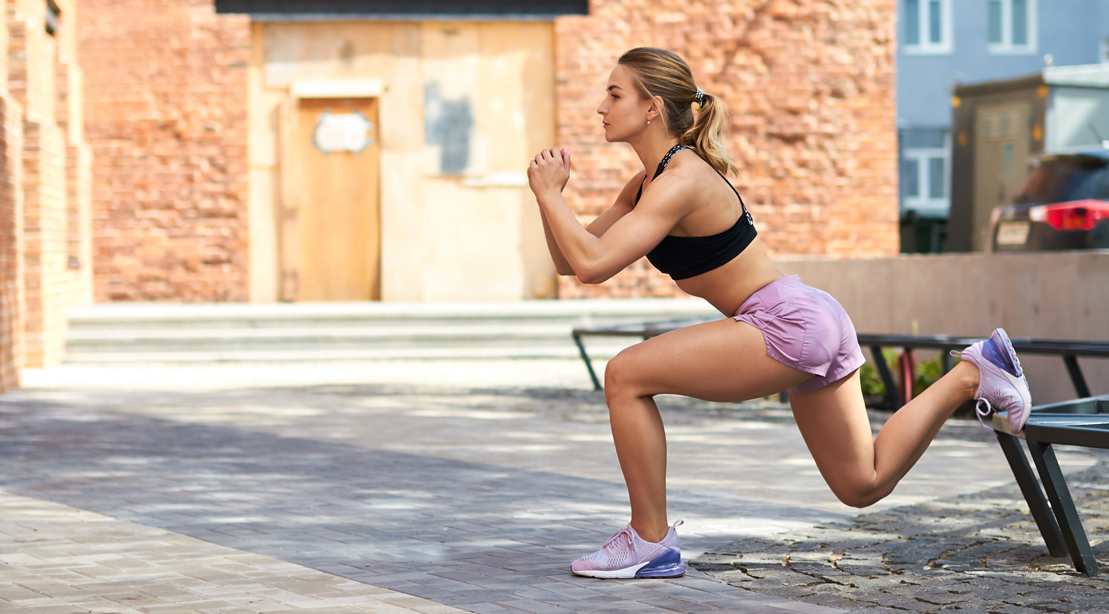
You must strap on the shoes and run, like a lot, to get better at running. You need to pick up and put down weight to get stronger, and when you do both, running magic will happen. Strength training turns a lot of marathon runners off because they believe they will get “too bulky” and slow them down or think running is all they need to strengthen their legs.
However, strength training is essential for marathon runners because it strengthens the muscles and joints, helping to improve race times and decrease their injury risk. So, it’s the opposite of what many runners believe. Tons of strength exercises will improve running performance, but there is one non-negotiable exercise that all serious marathon runners must do: split squats.
Here, we’ll go into why split squats are essential for marathon runners in preparation for the marathon season and in season to keep them injury-free.
Split Squat Benefits
Remember the following benefits the next time you try to talk yourself out of doing them in the leg workout you should be doing.
Strengthens Imbalances Between Legs
With bilateral squats, your dominant side will pick up the slack for the weaker side. You’ll strengthen the weaker side by performing split squats, reduce injury risk, and improve your running performance. If you haven’t noticed, running is a predominantly single-leg activity, so it pays to train that way.
Work More Muscle With Less Weight
Split squats make you work harder and recruit more muscle fibers to perform the squat movement. Reducing your support base engages your hip abductors/adductors more to stabilize your hips, which is pretty handy in a constant single-leg stance.
Core Strength And Balance
Split squats automatically throw your body off-balance, forcing your core muscles to engage to keep yourself balanced and in good lifting posture. Think of split squats as sneaky core training; in my opinion, you cannot get enough core strength.
Muscles Worked By Split Squats
Here are the primary muscles worked by split squat, which gives the marathoner a better idea of WHY they should be in every marathoner’s strength program.
Glutes: In the split stance, the glutes have to contract hard to pull you out of the bottom of the squat via hip extension
Hip Abductors: The glute med and medius on the side of your hip work hard to stabilize your hips and to keep you balanced in the split stance. Plus, they help keep the knee on the straight and narrow, which is excellent for running efficiency and reducing your knee injury risk.
Adductors: They assist with hip flexion and extension, keeping your knee tracking correctly for improved running economy.
Quads: Your quads extend your knee with every squat variation, but with the split squat, more load is put on the working leg for juicy quad-building engagement.
How Split Squat Benefits Marathon Runners
Although runners need to spend most of their time running, sprinkling a couple of weekly strength training sessions has enormous benefits for marathon runners.
Improved Recovery
The theory goes the stronger and better conditioned you are, the better you will recover because your muscles and lungs can do more. Many focus on why split squats will improve race times and general performance, but few focus on the recovery afterward.
Recently, a couple of my marathon clients finished the Honolulu Marathon after a steady diet of split squats and other glute exercises. After three days, they only had minor soreness. Although this is a case study of one, strengthening your legs will improve recovery.
Better Lower Body Coordination & Efficiency
A steady diet of split squats with a dash of lower body power will improve your running coordination and power, which leads to better running efficiency.
Reduces Injury Risk
You reduce your chances of an overuse injury whenever you strength train. This happens because the ligaments and tendons tug on the bones to remodel them to make them stronger, stimulating collagen production. This tough protein contributes to the strength of tendons and ligaments.
Having stronger bones and connective tissue will reduce your injury risk. Furthermore, because your quads act like shock absorbers with every foot strike, having strong and more muscular quads will enhance your chances of keeping your knees good for the big day.
More Juice In Your Caboose
Many runners have great-looking hammies but limited glute development because running is hamstring-dominant. But putting some juice in the caboose with split squats is like adding horsepower to a car, giving you a bigger engine and spreading the load over the glutes and hamstrings. If you run 26.2 miles, you’ll need a big engine, and split squats will help.
The Best Split Squat For Marathon Runners For Off-Season Training
In a hand-supported split squat, you are holding one hand on the squat rack while holding a dumbbell/kettlebell in the other hand. Due to the increased stability, your body focuses more on the quads and the glutes and less on the stabilizing muscles that keep you upright. This variation is excellent for lifters of all experiences due to the support and your ability to load up for more strength.
How To Do the Hand-Supported Split Squat:
The working leg must be next to the squat rack.
Grip the rack lightly with your fingers and thumbs and hold a heavy dumbbell in the opposite hand.
Get in your preferred split stance with your front foot pointed forward and gripping the ground.
Slowly descend until your weight or knee touches the floor while maintaining a slight forward lean.
Push through your front foot and return to the starting position.
Reset and repeat, and then do the other side.
Sets & Reps: Two to four sets of 10 to 15 reps on both sides work well for most.






